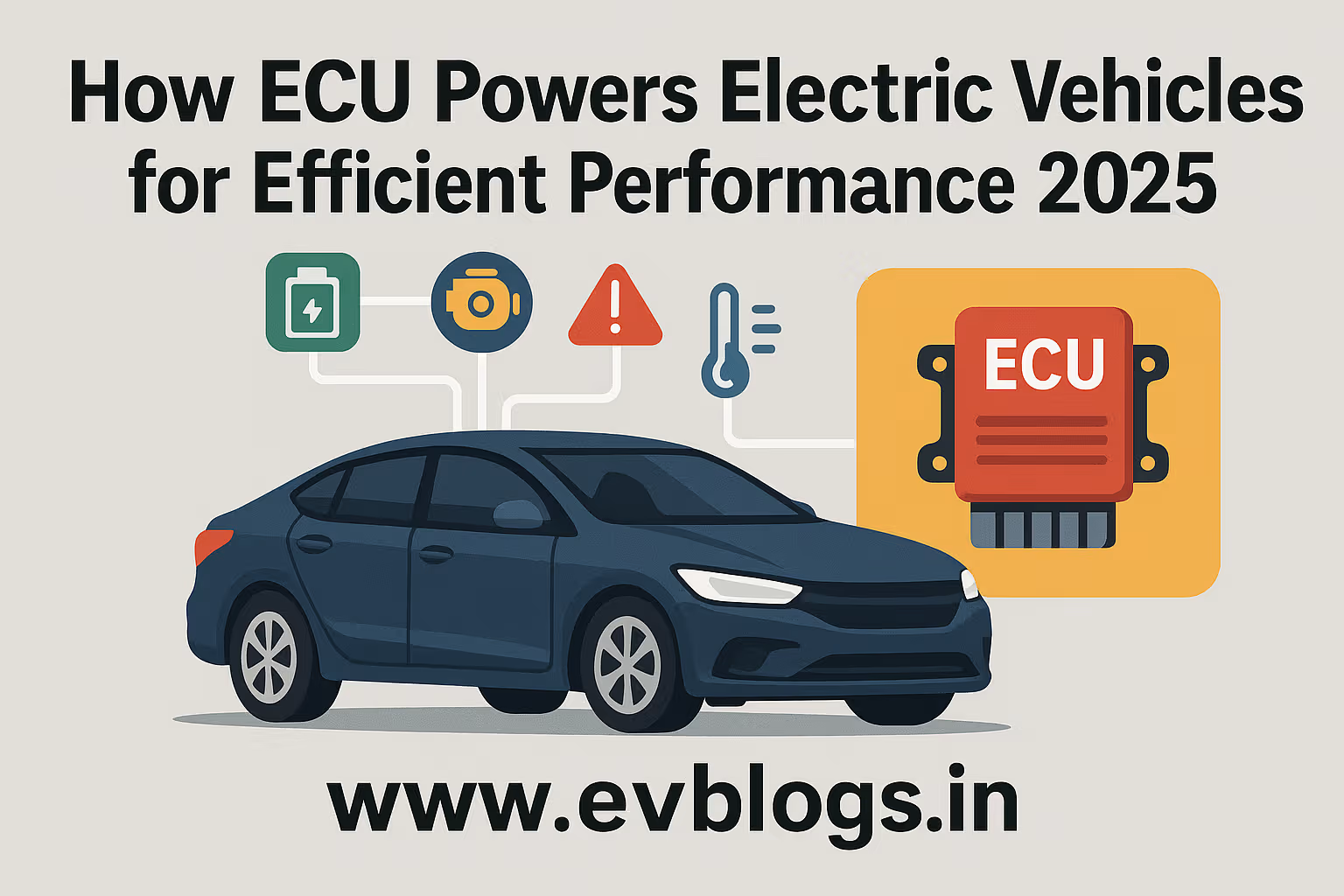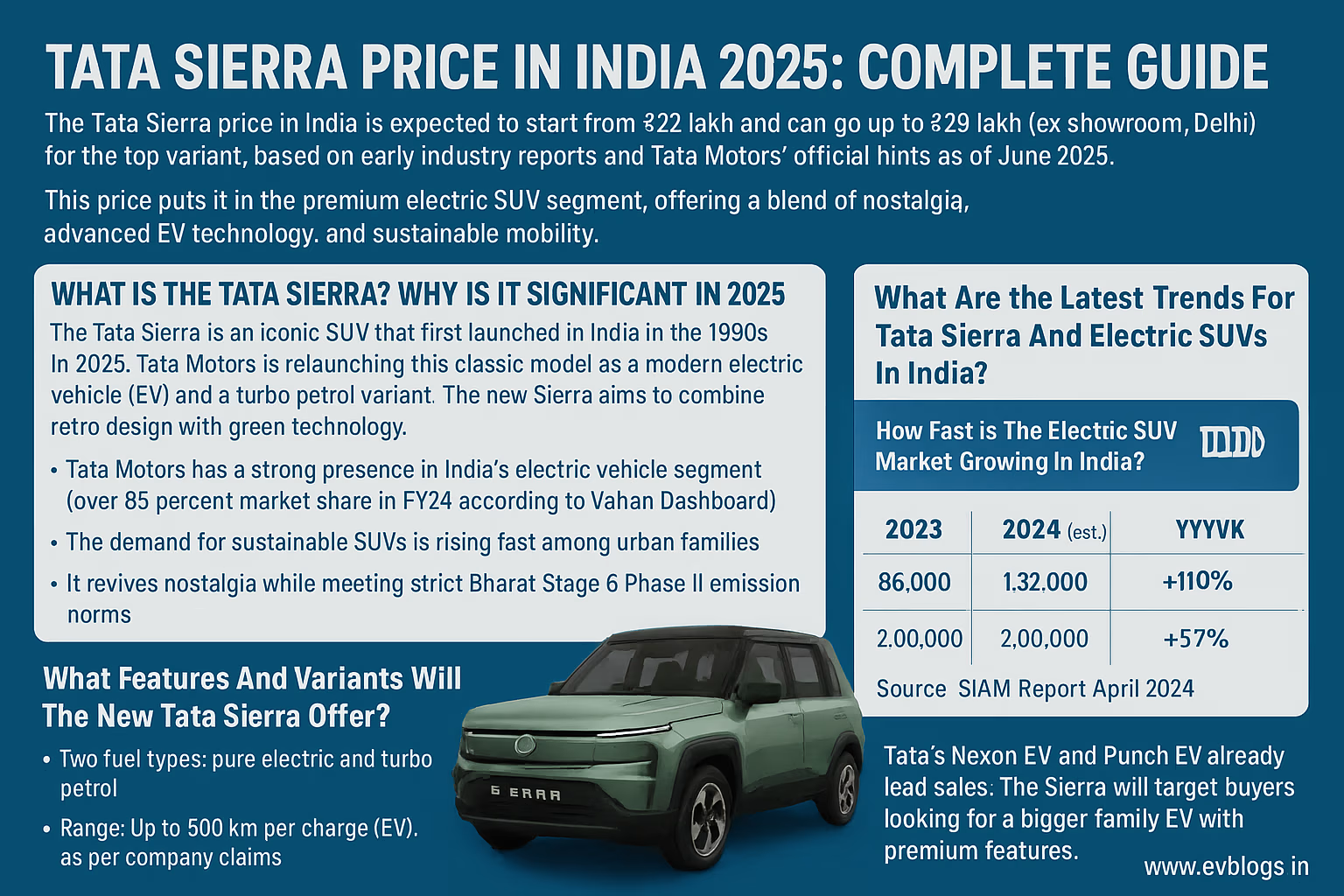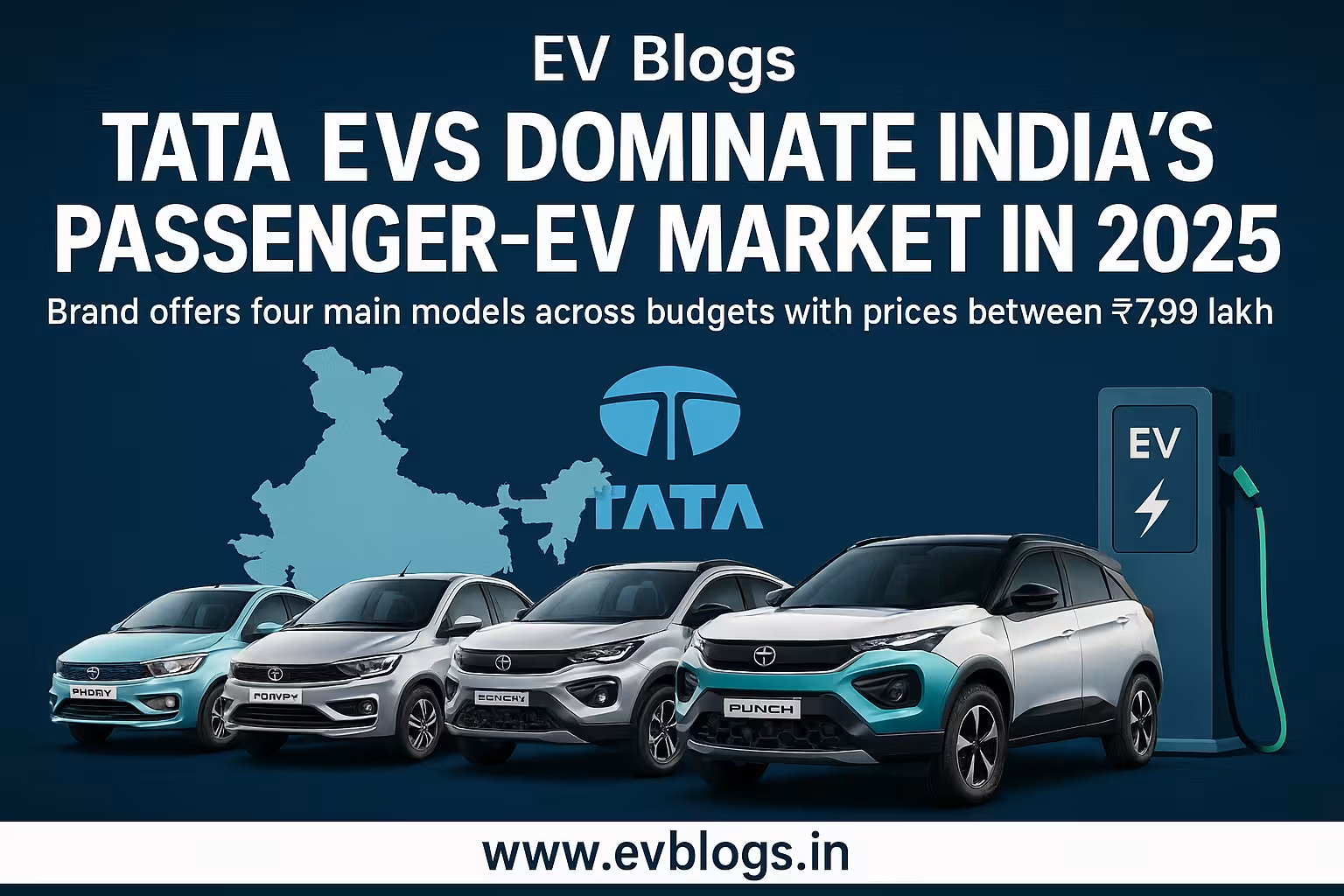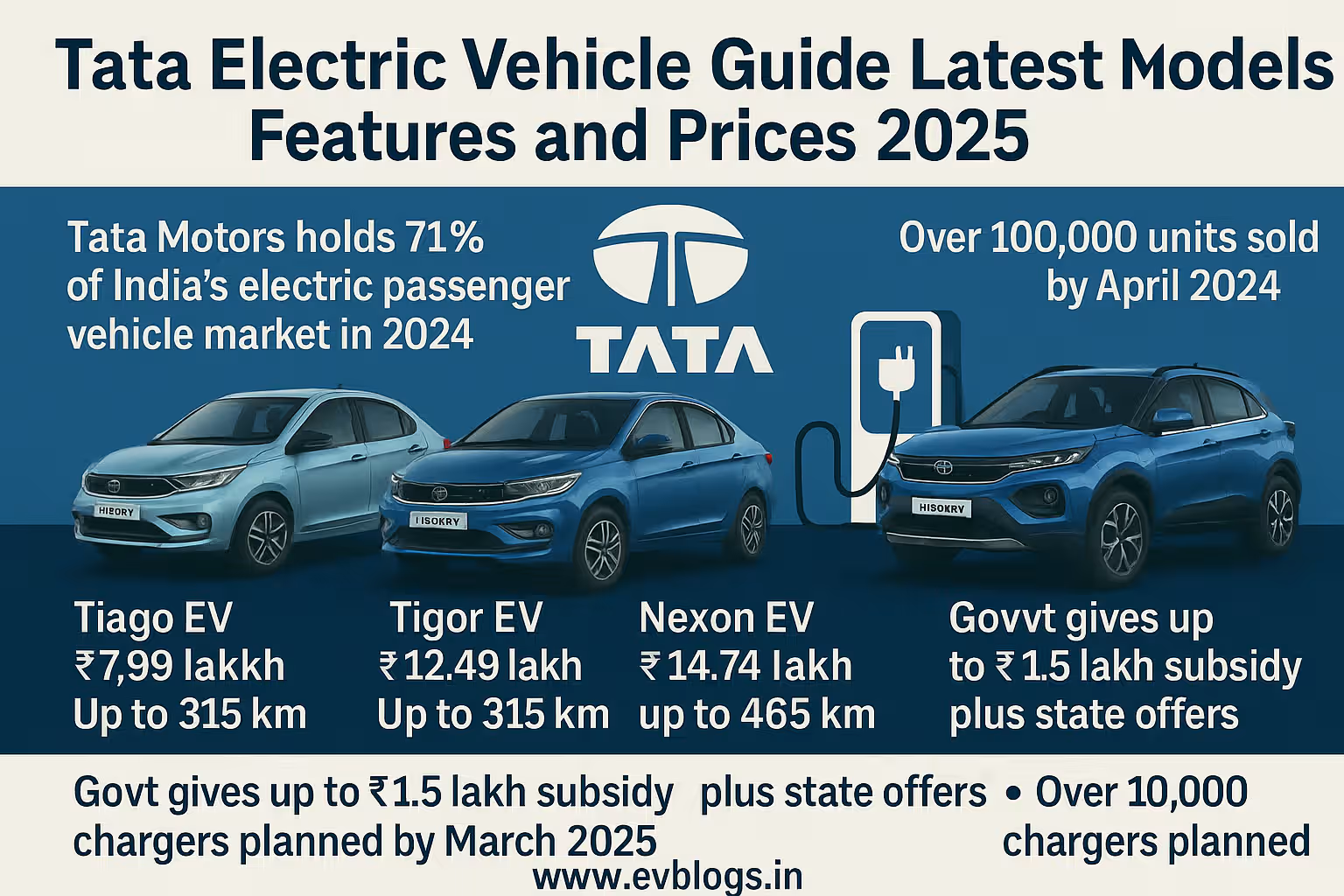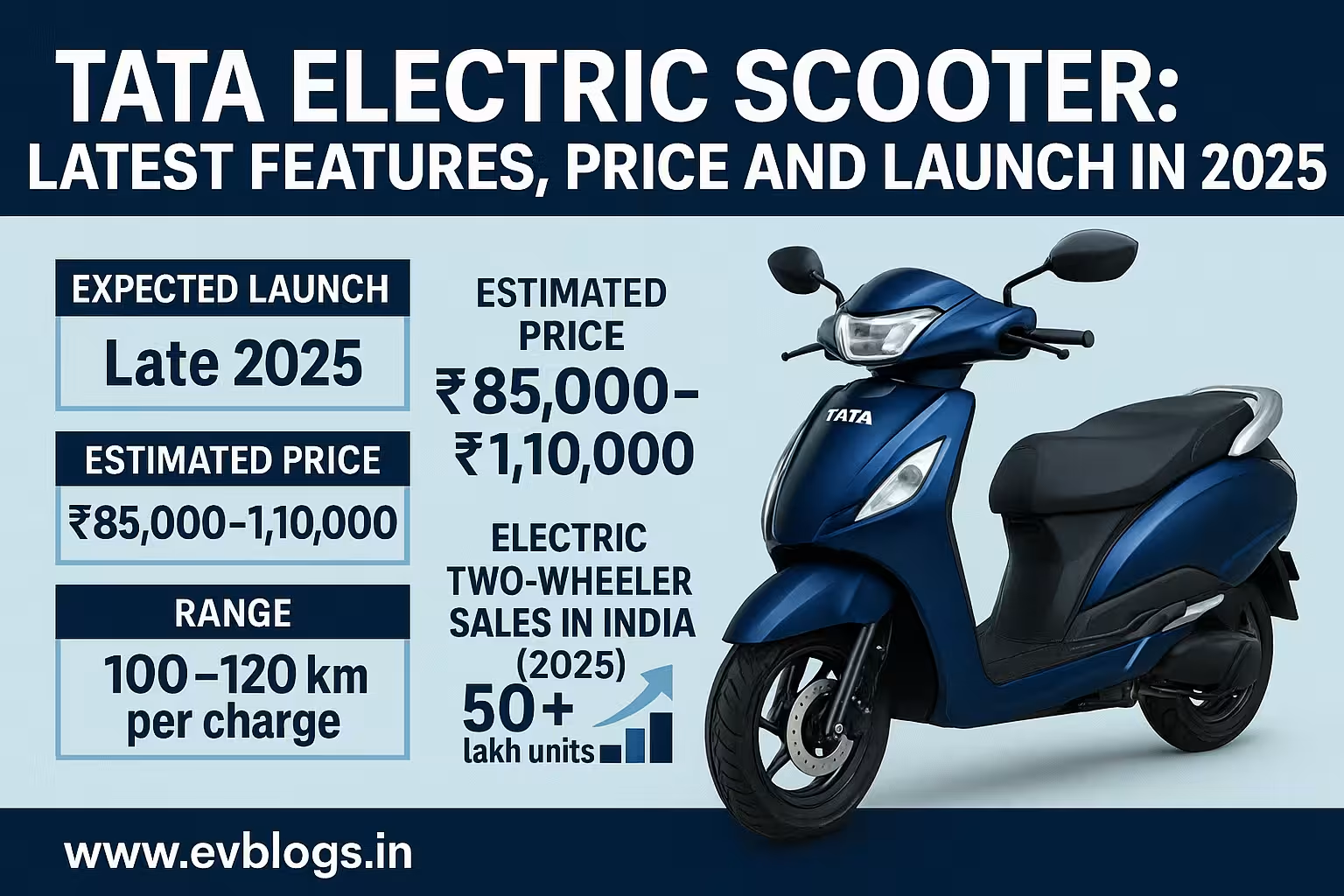Hedhvick Hirav
Hedhvick Hirav is a dedicated EV researcher and editor with over 4 years of experience in India’s growing electric vehicle ecosystem. Their contributions have been recognized in leading sustainability publications and automotive journals.
Summarize & analyze this article with
Choose an AI assistant and open this article directly:
Tip: if the AI doesn’t fetch the page automatically, paste the article URL manually.
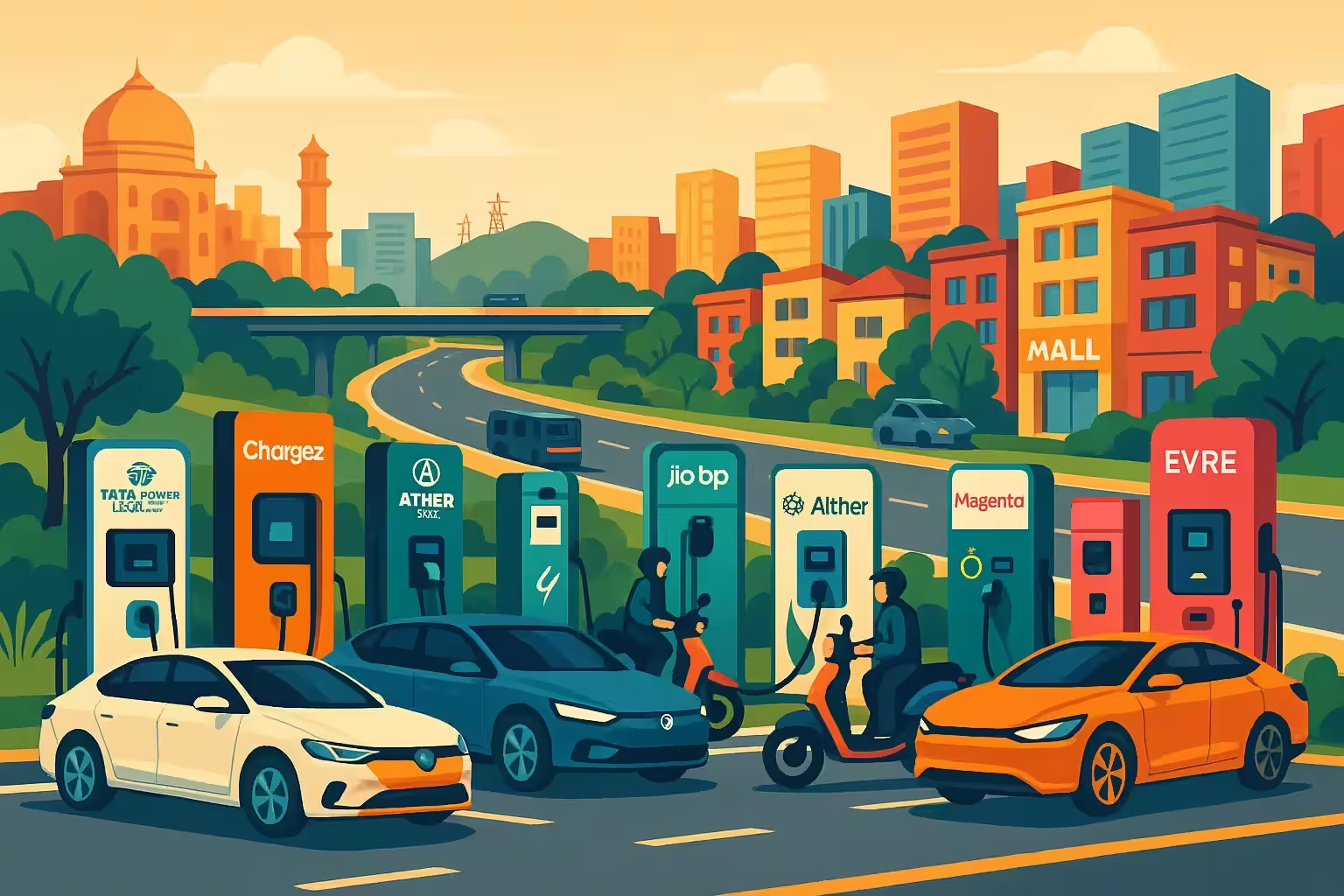
Which are the Best 10 Electric Vehicle Charging Stations in India in 2025?
Are you planning to purchase an electric vehicle (EV) in India or you want to know where you can recharge your EV when you are on the move? By 2025, India is already on a good path to the EV adoption, with thousands of charging points found in the main cities and highways. Selecting the appropriate charging station network is a way to save your time, as well as safety and health of your vehicle. Here is what you should know about the top 10 electric vehicle charging stations in India in 2025 according to the latest data, user experiences, and industry insights.
Electric Vehicle charging points are the most important aspect of a smooth electric mobility in India.
By the year 2025, the Indian EV charging market is expected to top 200,000 public charging points (FADA, NITI Aayog).
The majority of the leading charging networks are now fast charging, offer convenient payments, and are available 24/7.
Now, let us get into how you can make the most suitable decision regarding your EV charging requirements.
What are the Biggest EV Charging Networks in India 2025?
By 2025, India is home to a number of charging networks. All the three have their own advantages- affordability, coverage, speed, and user experience.
These are the popular networks in India:
- Tata Power EZ Charge: Best network, good coverage and strong reliability.
- Ather Grid: Famous to be the fastest, smart charging and ideal on two-wheelers.
- ChargeZone: High-speed development along highways, and can be used in long-distance travel.
- Fortum Charge & Drive: A global experience, low down time, buttery smooth application.
- Magenta ChargeGrid: New technology, solar powered alternatives.
- Reliance Jio-bp Pulse: Premium locations of very large scale.
- Statiq: low-cost, online bookings, city.
- VRE: An orientation towards sustainability, a collaboration with real estate partners.
- Volttic: Widening the semi-urban and rural markets.
- Fast chargers, business partnerships Exicom Power.
Comparison Table: The Top 10 EV Charging Networks in India 2025
| The name of the Company | The number of stations (2025) | The type of charger (AC/DC) | Fast charging (Yes/No) | Applications supported | Payment methods | Special features | Area of coverage |
|---|---|---|---|---|---|---|---|
| Tata Power EZ Charge | 6,200+ | AC/DC | Yes | Yes | UPI, Cards, Wallets | Pan-India | |
| Ather Grid | 2,500+ | AC (7.2kW/3.3kW) | Yes (two-wheelers) | Yes | UPI, App, Cards | Real-time availability, best suited to bikes | Major metros, tier 2 |
| ChargeZone | 2,200+ | AC/DC (up to 60kW) | Yes | Yes | App, Cards | Highway focus, solar options | Highways, cities |
| Fortum Charge and Drive | 1,800+ | AC/DC (up to 50kW) | Yes | Yes | UPI, Cards | European quality, multilingual app | Urban, highways |
| Magenta ChargeGrid | 1,450+ | AC/DC | Yes | Yes | UPI, Cards | Solar integration, IoT enabled | Tier 1, tier 2 cities |
| Reliance Jio-bp Pulse | 1,300+ (fast growing) | DC (30-60kW) | yes | yes | Jio app, UPI | Fuel station tie-ups, Lounges | Metro, highways |
| Statiq | 1,200+ | AC/DC | Yes | Yes | UPI, App | Budget-friendly, live tracking | Urban, peri-urban |
| EVRE | 1,000+ | AC/DC | Yes (select) | Yes | UPI, Cards | Green energy, gated communities | Urban, apartments |
| Volttic | 900+ | AC/DC | Limited | Yes | App, UPI, Cards | Tier 2/3 orientation, low rates | Small towns, cities |
| Exicom Power | 850+ | DC (fast), AC | Yes | Yes | App, Cards | Fleet/commercial focus | Pan-India |
Note: Data until 2025 are estimates and based on announcements and trends. Coverage and features are subject to change by location.
What do these charging networks provide and how do they work?
Learning the way these networks work assists you in choosing the one that best suits your frequent routes or lifestyle.
Majority of the stations have both AC (slow/overnight) and DC (fast) charging, and are compatible with 2-wheelers, 3-wheelers, cars and some buses.
The use of the Apps is central to the experience- find stations, check availability, pre-book and make payments all in one place.
UPI and digital wallets are also very acceptable, as part of India Digital Bharat.
Customer service, safety and 24/7 access have turned into the standard of the industry.
Other services and functionality
- Tata Power EZ Charge: priority support, good uptime and perfect with Tata EV but all vehicles are welcome.
- Ather Grid: Compatible with Ather scooters in particular, and other brands as well. App- Question and answer chat support
- ChargeZone: solar based alternatives, loyalty, wide coverage of Mumbai-Delhi, Bengaluru-Chennai roadways.
- Fortum: Multi lingual support, association with other car manufacturers such as MG and Hyundai.
- Magenta ChargeGrid: Green energy and solar energy solutions.
- Reliance Jio-bp Pulse: Ability to work in Jio environment, future technology.
- Statiq: Emphasis on low cost, and numerous 0 / min promotions.
- Sustainable places, such as tech parks, residential complexes.
- Volttic: Growing to smaller cities to have a broader coverage.
- Exicom Power: They were used in commercial fleets of vehicles, including government buses.
Did you Know? Thick curl close bloc Kate-Kate close Hai-Hai close In India, more than 35 percent of all public charging stations will be powered by renewable energy by the middle of 2025, lowering the carbon emissions of your EV further!
Where Are These EV Charging Stations Located in In India?
Finding an accessible charging station is now easier than before, however, coverage depends on provider and the region.
Metropolitan Areas and Metropolis Cities 20
Dense networks are available in most cities with Mumbai, Delhi NCR, Bengaluru, Chennai, Hyderabad, Ahmedabad and Pune topping the list.
Hot spots include shopping malls, IT parks, residential complexes and parking.
Highways & Inter- Examples:
ChargeZone, Tata Power and Reliance Jio-bp Pulse are strengthening highway corridors with every 25-50km on routes like Mumbai-Pune, Delhi-Chandigarh, Bengaluru-Hyderabad.
The amenities are normally restrooms, cafes, and 24x7 security.
The rural areas and the second and third cities
The projects by Volttic, Statiq, and Magenta ChargeGrid are some of the first steps in smaller cities, tourism locations, and state roads.
Expert Insight By 2025, pan-India EV charging will be in the tipping point with at least one publicly accessible station within 10km in all major cities and 30km on all major highways. Praveen Chaturvedi, EV Policy Analyst
What are the Best Times to Charge at Public EV Charging Stations in India?
Charging at the right time can save you money and the long queues.
The less crowd is in early mornings (6-9 am) and late evenings (8-11 pm).
The weekdays tend to be less heavy as compared to weekends when many EV owners utilize the public charging systems in traveling intercity.
More rush is seen during holidays and festivals in fast chargers.
Off Peak/Peak Pricing
There are networks such as Statiq and Tata Power that have reduced tariffs in off-peak periods. Don not forget to check app notifications in case of special offers.
Reservation queuing
The majority of applications allow you to check in real-time and book slots in advance.
The shortest waiting time is at the new stations or stations located in residential estates.
Did you Know? Thick curl close bloc Kate-Kate close Hai-Hai close In high-traffic stations in Mumbai and Bengaluru, there is already smart queuing in place; the app notifies you when it is your turn, so you do not need to wait at the station!
Why Should You Use a Specific Charging Network in 2025?
Your decision depends on the vehicle you have, the place you will be travelling, how often you travel, and even how you wish to make payments.
Factors to Take into consideration:
- Location: Is the station close to your place of residence, work or your frequent travel path?
- Vehicle Compatibility: Does the network include the type of EV charging port that you have (Type 2, CCS2, CHAdeMO, etc.)?
- Speed: Do you need fast charging or will scheduled charging / overnight charging suffice?
- How reliable is app? Are there warranties of maintenance and assistance?
- Price: Do tariffs have transparency and competitiveness to your usage?
- Sustainability: Do you like green/solar powered stations?
- Value Added Services: Lounge, bath, WiFi or reward.
Standard User consultants
- Urban Commuters: Tata Power, Statiq, or EVRE can be used to have an accessible coverage in the city.
- Highway Travelers: Use ChargeZone, Reliance Jio-bp Pulse or Fortum.
- Two-Wheeler Riders: Ather Grid and Magenta ChargeGrid support them the most.
- Fleet/Commercial Users: Tata Power and Exicom Power may be used.
Expert Insight The proper choice of the charging network will help you decrease your waiting time by up to 60 percent and energy costs by 25 percent in 2025 in comparison with the random use of the public stations.
What Is the Standard Charging Price and Payment Procedure at EV Charging Stations in India 2025?
In 2025, EV charging is more transparent and competitive as compared to India currently.
Anticipated Price Set Up
- Slow/Charging(overnight): 8-12/kWh Fits 2-3 wheelers, sedans and small SUVs.
- Super fast charging: 25-30/kWh Most convenient when you want to top-up quickly and when traveling long distances.
- Subscription/Loyalty Plans: A lot of networks offer monthly packages at a discounted rate to frequent users.
Payment Methods
- Pay in one click with Google Pay, PhonePe, Paytm, etc.
- Credit Cards: This is accepted in all major stations.
- App Wallets: Prepaid top-up to make the payments smooth.
- Jio-bp pulse: MyJio app and Jio Money incorporated.
Additional Charges
- Idle fee (in case you left your car after the charging is finished)
- Booking/cancellation fees in some of the premium locations
Did you Know? Thick curl close bloc Kate-Kate close Hai-Hai close In India over 70% of EV users will use UPI or app-based payments by 2025 instead of cash or card!
Which EV Charging Stations are most suitable to EVs of Different Types in India?
Not every charging station can be used with every type of vehicle–select the charging station according to the type of your EV:
Two-Wheelers
- Ather Grid: Fast, exclusive two-wheeler charging, wide compatibility.
- Magenta ChargeGrid: Solar powered, low cost.
Car ( (Sedan/SUV/Compact)
- Tata Power EZ Charge: Suitable with Tata, MG, Hyundai and many other brands.
- Fortum, ChargeZone: Fast charging, suitable to travel long distances.
Business Vehicles and Q. Buses
- Exicom Power: A large and e-bus charging specialist.
- Fleet Plans (Tata Power): Fleet plans special offers on ride hailing, delivery, and logistic vehicles.
Rural, semi-urban
- Tier 2/3, Statiq, good accessibility relative to metros.
Expert Insight Always read your EV manufacturer recommended charging choices- using an incompatible fast charger can void your warranty.
What is the Safety and Reliability of Public EV Charging Stations in 2025 India?
Due to more strict regulation and new technology, safety and reliability have increased dramatically.
Safety Measures
- All best stations are government compliant BIS standards.
- Stations are overcurrent/overvoltage protected, grounded, and have emergency shut-offs.
- Major locations have CCTV, security staff and good lighting.
Reliability
- The 98+ percent uptime that Tata Power, ChargeZone, and Fortum reported in 2025.
- Real time maintenance notifications through app or SMS.
- Backup power in the event of grid outages at a few premium stations.
User Experiences
- Tata Power, Statiq and Ather Grid have been rated highly in reliability by most users, particularly during the monsoons.
- The average downtime in case studies conducted in Delhi and Mumbai is below 5 hours per month.
Did you Know? Thick curl close bloc Kate-Kate close Hai-Hai close In 2025, insurance policies are now covering EV charging accidents, signifying a newfound respect of charging station safety!
What are the Actual User Experiences and Tales with These Charging Stations?
There is no substitute to first hand experiences to inform your decisions. The following are some of the real experiences of Indian EV owners in 2025:
I saw a post on Facebook about the Tata Nexon EV and the instant I saw it, I knew that this was what I wanted. I did a lot of research about the Tata Nexon EV and it was then I decided to buy it. I am happy with my purchase. I use the application of Tata Power to locate nearby stations. I did not have to wait over 10 minutes even during the weekend.
Leena ( Ather 450x Rider, Bangalore) Ather Grid is wherever I need it- work, gym, shopping. Recharging is fast and the app keeps me up to date in realtime.
Suresh (MG ZS EV Owner, Roadtripper , Delhi) ChargeZone and Fortum have ensured that highway travel is free of stress. I can now travel Delhi to Jaipur without range anxiety. Their lounges are a pleasant added-perk.
Priya (Statiq Brand, User, Budget Traveler Of Kolkata) 0/min offers were very good when I started. The flexibility of the app means that as a student I never pay more than I should.
Gurpreet(Amritsar Volttic User, small Business Owner) Once it was a nightmare to charge in less populated towns. The rates and app of Volttic are simple- even in rural Punjab.
Bengaluru Case Study IT Park
EVRE has collaborated with a tech park to offer exclusive charging in its parking lot–more than 100 employees are saving as much as 1,200 rupees a month in fuel costs by using electric.
Did you Know? Thick curl close bloc Kate-Kate close Hai-Hai close In a 2025 survey, 82 percent of Indian urban EV users reported that they were confident that they could find a public charger at any time of day.
What is the Indian Government doing to support EV charging infrastructure in 2025?
The Indian EV charging landscape has received a turbo boost by government policies.
The Significant Supporting Measures
- FAME II and National Electric Mobility Mission Plan: Subsidies to EV buyers and setting up of stations.
- Delhi, Maharashtra, Tamil Nadu and others provide additional capital subsidies, free land, and reduced electricity tariffs to charging stations.
- Priority Lending: Charging infrastructure has now become a priority sector lending.
- Public-Private Partnerships: Cooperation with such companies as Tata Power, Fortum, and Magenta to speed up the implementation.
Regulatory Requirements
- Stations have to meet the standards of safety, accessibility and energy efficiency.
- The availability of open data sharing of all the public stations- enables you to locate chargers easily through any app.
Market Impact
- There is a 4x increase in the coverage of charging stations between 2022 and 2025.
- India is targeting to have one public charger per 20 registered EVs by the end of 2025.
Expert Insight Due to such policies, India is likely to have one of the fastest-growing EV infrastructures in the world between 2025-2027. Mobility Consultant Anjali Nair
What to Watch Out on Using EV Charging Stations in India?
Most popular networks are trustworthy, but it is possible to know some practical details that may improve your experience.
Notes and Cautions
- Be sure to check plug type before you leave- Type 2 and CCS2 are most common but some local stations may have other standards.
- Use the app to monitor your charging session so that you do not have idle fees and the spot can be used by others.
- Look at the app ratings and reviews- users report current problems or closure.
- Have emergency contacts on-hand, particularly in the event of late-night or highway charging.
- Bring your own charging cableThe cable at some stations will need to be plugged in by you.
- Keep yourself informed: Charging rates or station locations are sometimes subject to change so be sure to check the latest information prior to planning a trip.
Did you Know? Thick curl close bloc Kate-Kate close Hai-Hai close Informing about the new stations openings and offers via WhatsApp or Telegram groups attracted more than a quarter of all new EV users in 2025!
Concluding Thoughts: Which EV Charging Station Network Should Indian Users Choose in 2025?
The best network to use depends on your requirements, but in most cases, the Indian EV owners use:
- Tata Power EZ Charge is the widest and most reliable on all types of vehicles and all cities.
- Ather Grid will be in the lead in the two-wheelers and short urban commutes.
- ChargeZone and Fortum cannot be beaten in highway travel and fast charging.
- Statiq and Volttic will be your networks of choice when you need cheap charging in smaller cities and towns.
- Reliance Jio-bp Pulse is the rapidly developing with high-quality features.
- Magenta ChargeGrid and EVRE are green energy solutions to eco-friendly users.
What do you think is going to up?
Begin with the network that serves your routes and that accommodates your vehicle type.
Download the official app, see updated locations and deals, and do not be afraid to experiment with new networks because the charging infrastructure is developing at a very fast pace.
Disclaimer: There is a rapid change in EV charging infrastructure Visit network websites/apps before your charging session to check the latest updates on pricing, compatibility and more.
Did you Know? Thick curl close bloc Kate-Kate close Hai-Hai close It is predicted that by the year 2025, there will be more than 2 million EVs on the road, which will be facilitated by a network of charging stations that is growing stronger!
FAQs: The 10 Best Electric Vehicle Charging Stations in India 2025
Q1: Are Indian public EV charging points safe to use? Indeed, most of the leading networks adhere to BIS and safety requirements. Always go to reputed stations and track your session through app to have added safety.
Q2 Is it possible to charge my EV anywhere? Yes, except in some cases, depending on the type of port of your vehicle (Type 2, CCS2, etc.). There can be brand specific stations.
Q3 How long does it take to charge an EV in a public charging station? DC chargers, which can take 30-60 minutes to charge most vehicles, are fast, but slower AC chargers can take 4-8 hours depending on the size of the battery and the power of the charger.
Q4 Do you have any loyalty or subscription plans to regular users? Most networks have top up wallets, monthly passes or bundled packages, so be sure to have a look at their app or online to see what deals they are currently running.
What happens in case a charging station is out of service or inoperative? Report the problem through the network app or helpline and search the next closest station with the help of the map feature of the app. Maintenance teams are also expedited in most networks
Should you have additional inquiries, please take a look at the official applications or reach the network support to receive the most relevant and up-to-date information. Good moving and good filling!
If you have more questions, feel free to explore the official apps or contact the network support for the most accurate, up-to-date information. Safe travels and happy charging!


